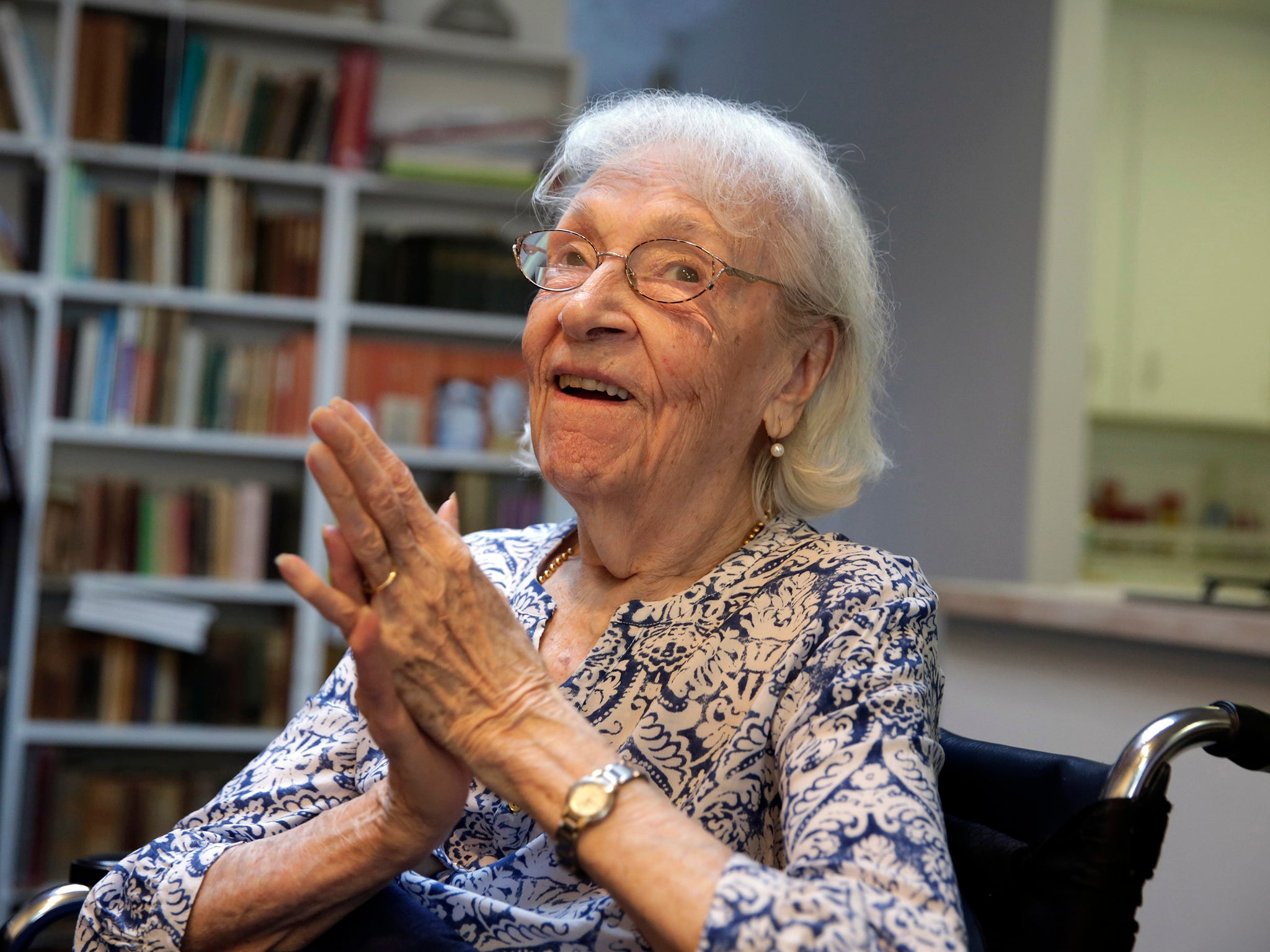Carmen Herrera: Minimalist artist who found fame late in life
The Cuban artist didn’t sell her first piece until 2004, aged 89, when she was propelled into international renown

Carmen Herrera was 106 when she died in her Manhattan loft where she had worked for more than half a century, creating a lifetime’s worth of abstract art that went almost entirely overlooked until her life was nearly over.
Herrera, who was born in Cuba in 1915 and trained in Paris in the aftermath of the Second World War, anticipated the artistic movement known as minimalism with her use of straight lines and geometric shapes. She exhibited her works occasionally over the years but did not sell her first painting until 2004, when a show at the Latin Collector gallery in New York helped propel her to sudden renown.
“How can we have missed these brilliant compositions?” art critic Laura Cumming wrote in The Observer in 2009, describing Herrera as “the discovery ... of the decade.”
Critics and collectors, once made aware that Herrera existed, were rapt by the intensity of her work, which she achieved by juxtaposing geometric shapes in contrasting colours – black and white, red and blue, black and yellow and, in her noted sequence “Blanco y Verde”, white and green. Pairing green and white, she once remarked, is “like saying yes and no.”
With her “hard-edged style of pared-down geometric shapes” and “simplified palettes”, she established herself as a leading abstract artist of the late 20th and early 21st centuries, James Meyer, the curator of modern art at the National Gallery of Art in Washington, said.
Last month, the National Gallery acquired two works by Herrera – an untitled painting in green and white, executed in 2013, and an untitled aluminium relief conceived in 1966 and completed in 2016. Her works are also housed at the Museum of Modern Art and the Whitney Museum of American Art in New York, the Smithsonian American Art Museum in Washington and the Tate Modern in London.
Herrera, Meyer said, “is an example of an artist persisting in her work, unaffected by lack of recognition, a lack of sales, pursuing her vision with great rigour and self-confidence and happily receiving recognition late in life.”
Herrera was born in Havana in 1915 – on 30 May, according to her Cuban passport, or on 31 May, according to her US one – one of seven children in a progressive and affluent family. Her father, who died when she was three, was the editor of the Havana newspaper El Mundo. Her mother was a reporter for the publication and a committed feminist.
Herrera began painting as a child, went to finishing school in Paris and returned to Cuba to study architecture at the University of Havana. She met a visiting American, Jesse Loewenthal, and returned with him to the United States. They were married in 1939.
The couple lived for a period in Paris, where Herrera, who had previously painted in a more traditional, representational style, began to explore abstract art in earnest after discovering the Salon des Realites Nouvelles, which cultivated abstract artists.
“That was an eye-opener,” she told TheObserver in 2010. “I thought, ‘This is what I want to do.’ I went to the studio, and I worked and worked and worked and worked. I was angry that I didn't know about this before.”
In 1954, she and her husband returned to New York, where he worked as a high school English teacher while she devoted herself to her artwork, generating little if any notice.
Herrera faced obstacles as a woman painting during a time when, Meyer said, “what we call the art world tended to be sexist and tended to diminish women's accomplishments.”
But also, he noted, “the style of her work ... fell somewhat between the cracks.” Herrera was working in what would become known as the minimalist style in the 1950s, when the abstract expressionism of artists such as Willem de Kooning, Jackson Pollock and Franz Kline was ascendant. Herrera, Meyer said, was “working in a much cooler, cleaner way,” without “manifest brushwork.”
“There is nothing I love more than to make a straight line,” Herrera told The Sunday Telegraph in 2010. “How can I explain it? It’s the beginning of all structures, really.”
Asked where a line ends, she replied, “It doesn't.”
Herrera recalled her indignation when, by her account, a gallerist in New York told her, “Carmen, you can paint circles around the men artists that I have, but I’m not going to give you a show because you’re a woman.” Herrera did find, however, that obscurity had its benefits; she was free to pursue her art with no need to satisfy anyone but herself.
“I do it because I have to do it,” she told The Telegraph. “People keep saying, ‘How do you work all those years without any reward, no money, few exhibitions’ Because it was a vocation. Why would anyone go to a hospital to take care of the lepers if they do not have the vocation of being nuns? It’s the same.”
After she made her first sale at age 89, Herrera's work attracted ever greater notice – and fetched ever greater prices, into the tens of thousands of dollars per piece. In 2016 and 2017, she was the subject of an exhibit at the Whitney, Carmen Herrera: Lines of Sight.
By the end of her life, Herrera, suffering from severe arthritis, relied on a wheelchair to move about her studio. She had no immediate survivors. She continued to paint, she told The New York Times in 2009, because “only my love of the straight line keeps me going.”
Carmen Herrera, artist, born 31 May 1915, died 12 February 2022
© The Washington Post
Subscribe to Independent Premium to bookmark this article
Want to bookmark your favourite articles and stories to read or reference later? Start your Independent Premium subscription today.